3.4 – The Pop Music Scene in Salalah: Cultural Symbiosis and Musical Mutualism
AKR in Oman Part 3
3.4 – The Pop Music Scene in Salalah: Cultural Symbiosis and Musical Mutualism
An extraordinary series of concerts is being presented parallel to and in consort with the Salalah Tourism Festival this year. Organized and produced by Muscat Media Services, four concerts, involving some of the most famous and beloved pop singers from the Arabian Gulf as well as a number of more local Omani singers, have been staged over the past 20 days at the massive theater, Masrah Al Marouj. I was told that this theater, which has been packed to capacity for these events, seats 7,000, and that it is the largest stadium-style theatre in the entire Arabian Peninsula. It does not fall under the auspices of any government ministry, as I understand it; rather it was built at the initiative of Oman’s beloved leader His Majesty, Sultan Qaboos bin Said, who presented the theater as a gift to the city of Salalah.
Figure 1: Concert organizers from Muscat Media pose in front of the poster for the second of four concerts: Ahmed M Safrar, CEO (left) and Photographer, Muntasir Zarroug or MZ, originally from the Sudan (right).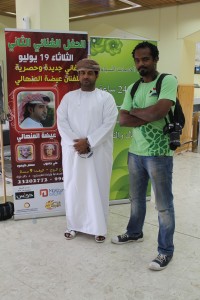
I became aware of these concerts because of a huge free-standing poster in the lobby of the Hamdan, a large and comfortable hotel with cheery, decorative arrangements of plastic flowers and plants in every corner, a huge swimming pool that seems hardly used, and a friendly staff, almost all of them Indian expats. My host, Khaled Tabouk from the Ministry of Information, pointed out the concert series to me. I was anxious to check out the scene and bugged Khaled persistently to arrange that I attend the first concert and meet the organizers. In the early evening of the night I was to attend the first concert I returned to the Hamdan to find a group of men in suits with instrument cases — an unusual sight in Salalah, or actually anywhere in Oman. Eureka! I thought – this is to good to be true! I introduced myself to the guys in the suits and learned that an entire orchestra of 25 musicians from Egypt would be staying at my home away from home, the Hamdan Hotel for the next 20 days to accompany all of the concerts.
Under the direction of Maestro Khaled Fouad, this Orchestra, Firqa Al Atwan, is no stranger to the Gulf. They tour here frequently, “too many times,” joked Mohamed El Nekhily, who plays trap-set drums with Orchestra’s robust percussion section. Firqa Al Atwan is a top-notch, professional orchestra and it has been thrilling to witness their stunning musicianship. The organization of this ambitious series of concerts by Muscat Media Services has been equally impressive. Each concert features four or five singers: two or three Omani singers open the show followed by the more famous singers. The CEO of Muscat Media, Ahmed M. Safrar, invited me to greet super star Aidha Al Menhali, at the Salalah Airport on the day he arrived.
Figures 2 and 3: Aidha Al Menhali, a superstar from the UAE, arrives at the Salalah airport and is whisked away to the Hilton Hotel for an appropriate reception.
For each concert and with just two or three days, the orchestra and four or five solo singers, rehearse and perform, collaborating together, usually for the first time. Maestro Khaled Fouad, prepares the music for his orchestra, transcribing melodies straight from recordings or just skeleton scores, and arranging the music for his orchestra. One of his assistants converts the transcriptions into scores using the Sibelius 6 music notation program. Parts are produced and copied and “gig-books” are assembled. Then with one only one or two rehearsals, concerts musically materialize. The incredibly tight timetable and the, undoubtedly huge level of stress for the Orchestra director and his musicians, seems unbelievable, making the process of production all the more remarkable.
Figure 3: Maestro Khaled Fouad in rehearsal at the Hamdan Hotel. Aidha Al Menhali of the UAE is on the left in the ball cap. Members of the six-person “chorale” are on the right.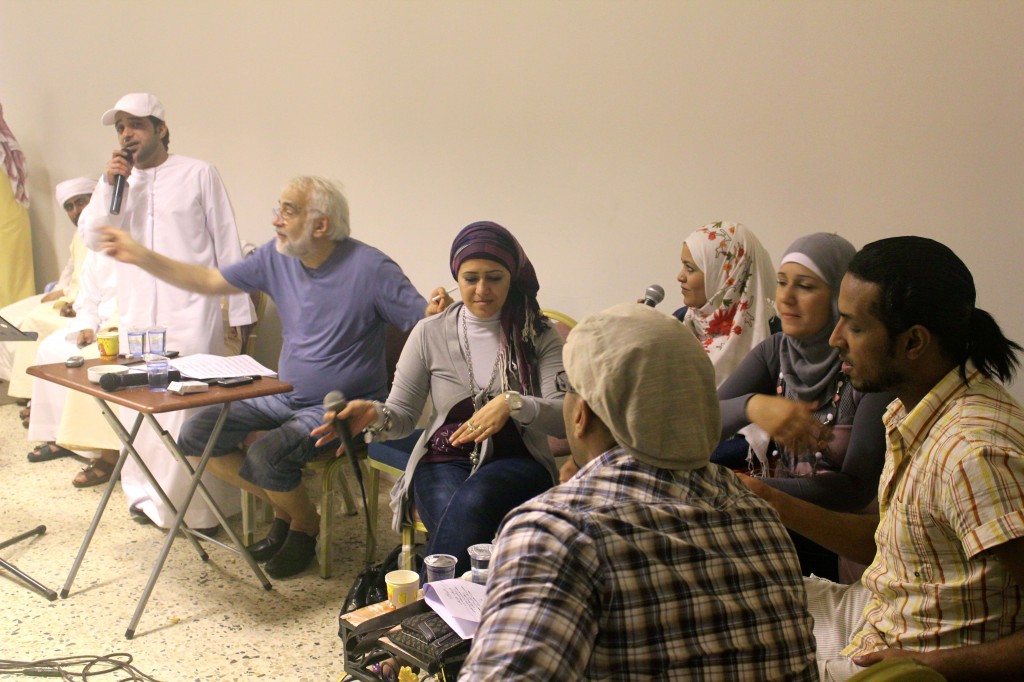
Figure 4: The front line of Firqa Al Atwan: Qanun, Nay, Saxophone, and ‘Ud. Said, an ‘ud player from Iraq plays an solid-body electric ‘ud made by Viken Najarian, one of the most prominent ‘ud makers in the United States and a friend of mine for the past 25 years.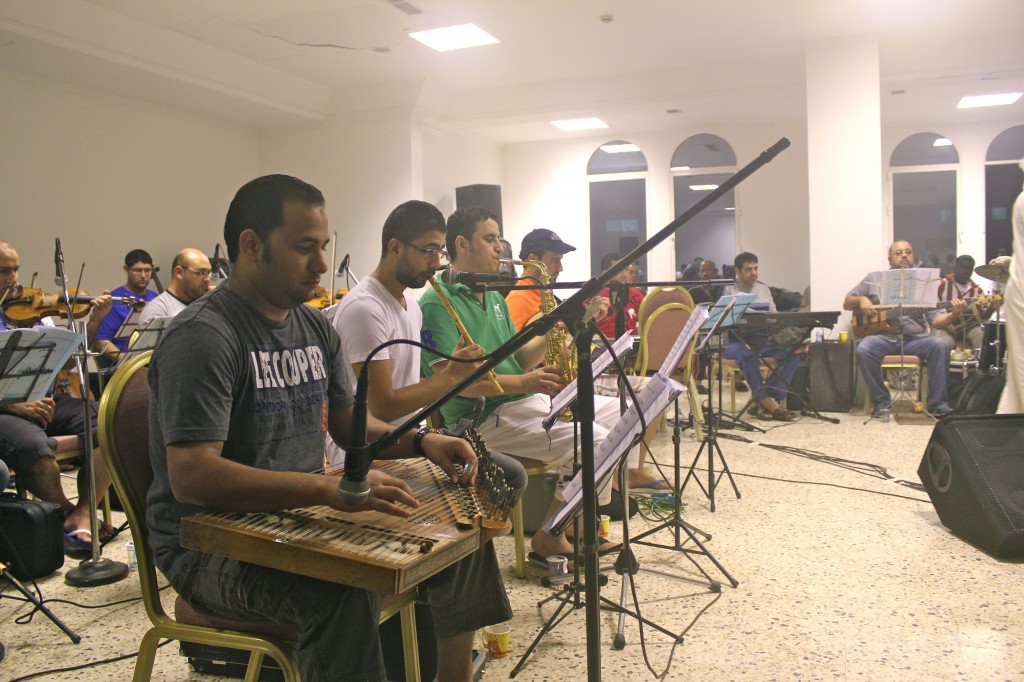
Figure 5: The librarian and assistant for Al Atwan, Salah Adawiyah, distributes the music for the next singer on stage at the Masrah Marouj.
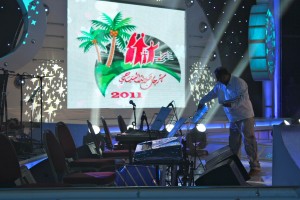
Figure 6: Yet to be replaced by synthesized strings, the large violin section (along with two ‘cellos in this case) is de rigueur for the Egyptian Firqa. Here is a picture of the violinists on stage.
There are several overlapping and intersecting phenomena at work here. Many of them can be collected under two overarching and complementary processes.
First is the incredible role of the Sultanate of Oman as a patron of the arts both in the Arab World and in the international arena. A country like Oman, with its financial resources and its initiatives to maintain traditional music while at the same time becoming more musical, plays a huge role in the mathematical formula of the Arab world musical economy.
Second, and to balance to the economic power of the Gulf states in contemporary cultural formulae, is the artistic dominance of Egypt, the importance of its musicians for the region, and the promulgation of Egyptian musical aesthetics and techniques including musical details like tuning, instrumentation, form, and arrangement. Without the musical manpower of Egypt and, as I have commented in earlier blog posts, of Iraqi musicians who work in Cairo and in the recording industry of the United Arab Emirates, concerts like this one, and the performances and recordings of local stars from the Gulf would not be possible.
This is a musical symbiosis and a cultural co-dependence or mutualism that is an essential component of the music culture of the region. To explore the biological analogy I evoke a bit further, lets consider the definition of symbiosis by the German micologist, Heinrich Anton de Bary, who in 1989, for his biological research on fungi 1989 defined the term as “the living together of unlike organisms” [1]. The majority of the Egyptians musicians with whom I have chatted during the past few days are not entirely “at home” with the music of the Gulf. Its music is not their lingua franca. When I complimented him on his orchestra, the Maestro frowned and said “yes, but this is not our normal work.” At the same time the “public ear” of Gulf audiences is localized. Music from the Northern Arab countries of Egypt, Syria, Lebanon etc. is largely foreign fare as was demonstrated when a young singer from Kuwait sang three pieces made famous by the Egyptian singer Umm Kulthum, to a largely unreceptive audience of young guys waiting to sing and dance to their music, that of the Khalij, or Gulf region. As Fahad Eid Subaity, mananger of the Musical Instrument Workshop for the Omani Royal Guard exclaimed during an interview I had with him two days ago: even the takht (the small classic ensemble of Egypt and the Eastern Mediterranean countries including ‘ud, nay, qanun, violin, and riqq) is completely new to the Omani public.
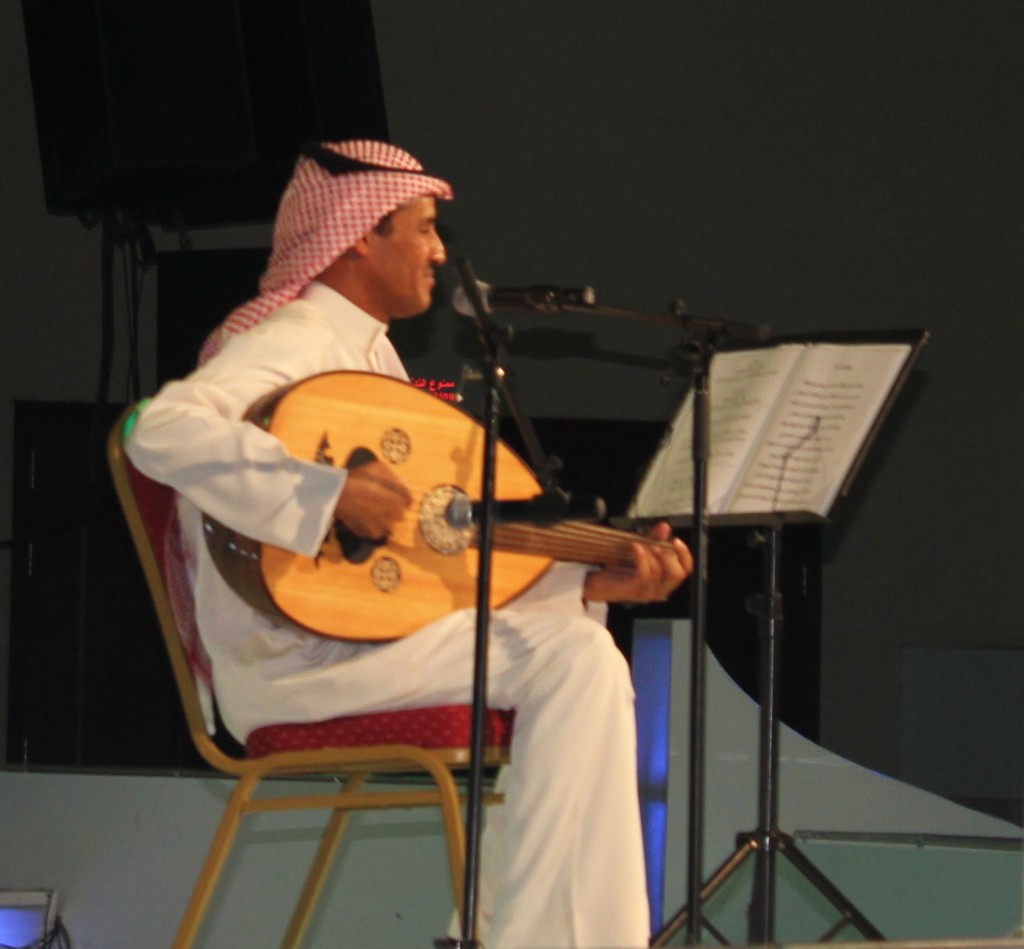 Figures 7 and 8: Last night the crowd was waiting for Saudi Arabian singer, Khaled Abd Al Rahman, the featured performer of the evening. This photo was taken from the “Ladies Section” of the theater. Figure 8: I got to have my picture taken with the star of the evening before his performance, at about 12:30 a.m., following 5 other singers.
Figures 7 and 8: Last night the crowd was waiting for Saudi Arabian singer, Khaled Abd Al Rahman, the featured performer of the evening. This photo was taken from the “Ladies Section” of the theater. Figure 8: I got to have my picture taken with the star of the evening before his performance, at about 12:30 a.m., following 5 other singers.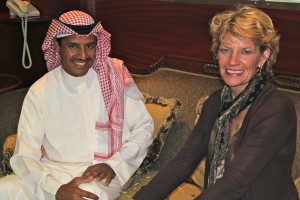
The website for the Oman Center for Traditional Music [2] states that there are 130 different kinds of traditional music in the Sultanate of Oman, almost all of them the result of hundreds of years of interaction between the seafaring cultures around the Indian Ocean. The scene I describe above is another example of musical fusion and diffusion in the contemporary moment.
AKR
Figured 9 and 10: Maestro Khaled Fouad and a view of the stage at the Masrah Marouj in Salalah, Oman. The logo for the Salalah Tourism Festival is pictured on the screen at the back of the stage.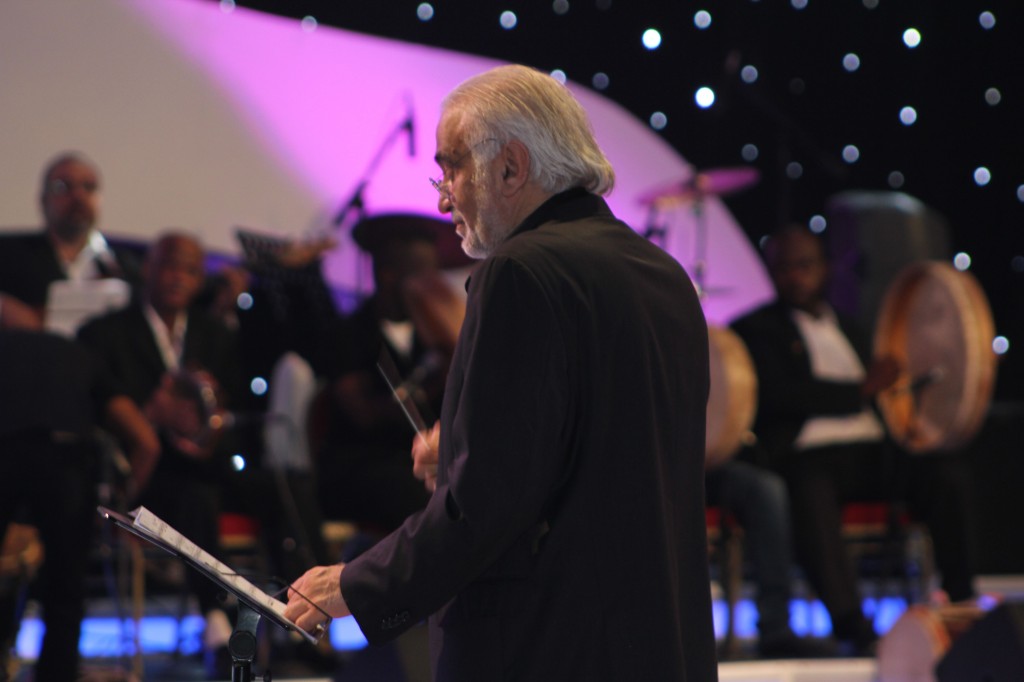
For related discussions on the routes of musical production see my earlier blog posts on the events and the music composed for National Day and on the Jama‘iyyat Howat al-‘Ud, the ‘Ud Amateurs Association in Muscat.
1. AKR in Oman Part 2 #2: How Many ‘Uds are too Many?, February 17, 2011
2. AKR in Oman Part 1 #6: Student Pageants: Dazzling and Spirited, December 17, 2010
[1] http://en.wikipedia.org/wiki/Symbiosis
[2] http://www.octm-folk.gov.om/meng/introduction.asp
Comments are currently closed. Comments are closed on all posts older than one year, and for those in our archive.

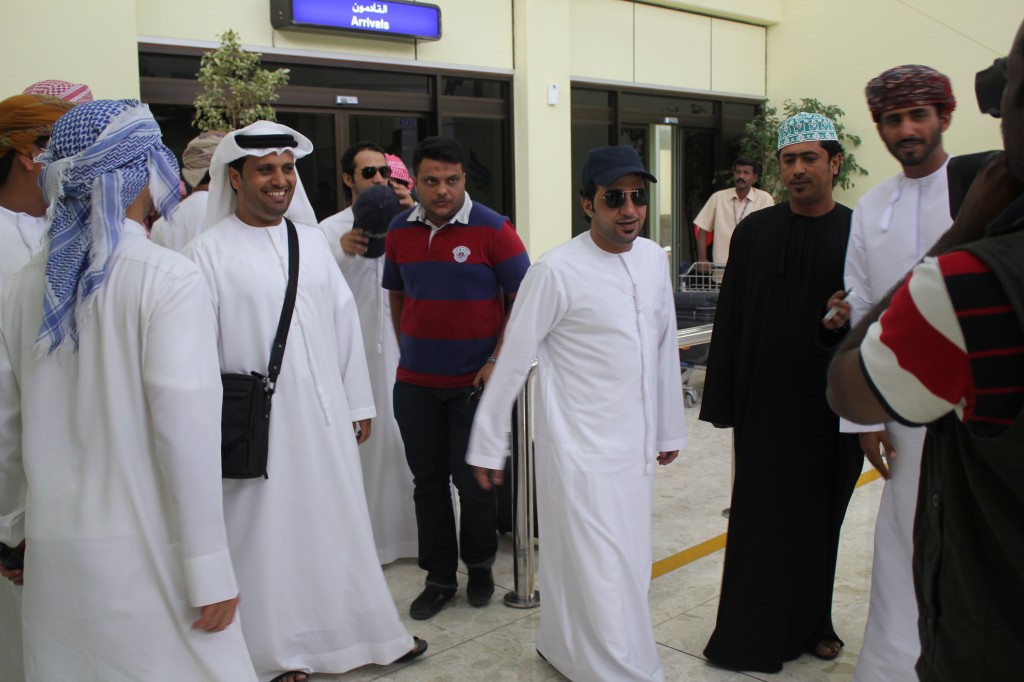
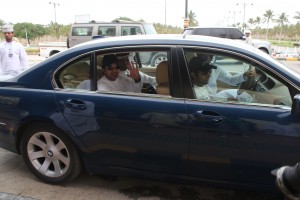
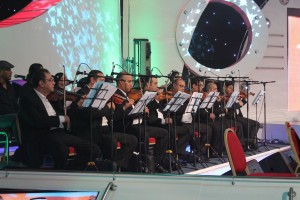
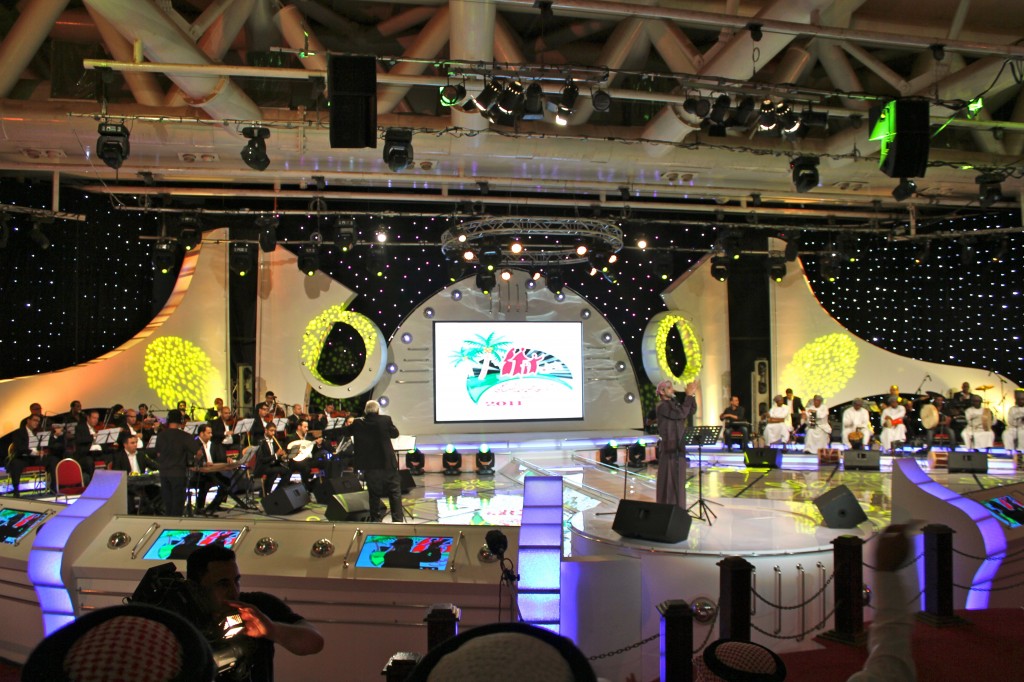
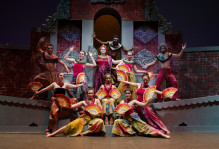
Great post! The music culture of the region is extremely exotic. The organizing of these concerts is a strict and exact process. It must have been a fascinating experience for you.